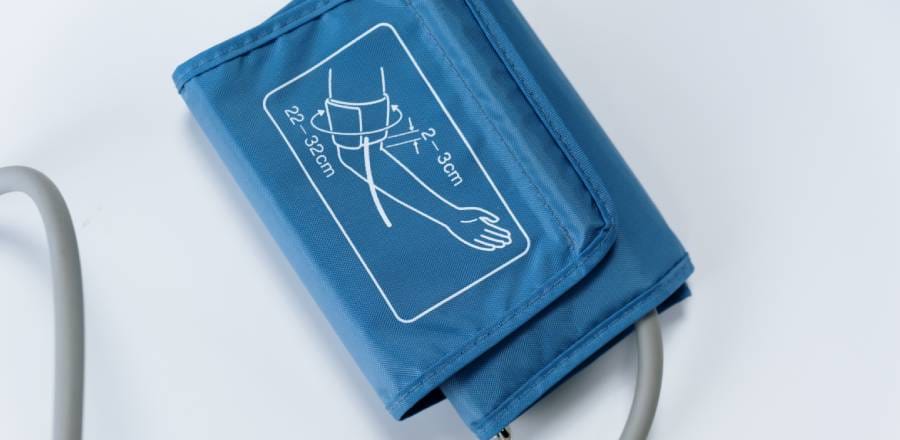Maintaining a healthy diet is crucial for managing high blood pressure. Hypertension is a common health issue that affects many adults and even some children. If your nurse or doctor measures your blood pressure at 140/90, then you suffer from hypertension. However, with proper treatment, including a balanced diet, medications, and exercise, you can control your high blood pressure and lead a healthy life.
The ideal diet for high blood pressure patients should include low-fat or fat-free products and exclude animal fats, red meat, sugary products, and sweets. It is essential to note that following a diet for high blood pressure patients also reduces or prevents clogged arteries, increases in cholesterol, cancer, and helps maintain a healthy weight.
Studies show that high potassium and low sodium content in fruits and vegetables help regulate blood pressure levels. Therefore, it is crucial to incorporate fruits and vegetables into your diet. Some potassium-rich foods include bananas, oranges, spinach, sweet potatoes, and avocados. You can also add other low-sodium foods to your diet, such as whole grains, low-fat dairy products, and lean proteins like fish, skinless chicken, and legumes.
Moreover, the diet for high blood pressure should not contain a high amount of salt or sodium. While many people might think salt-less food is flavorless, there are other ways to add flavor to your meals without using salt. You can add spices to your food, such as black pepper, garlic, ginger, and basil.
To ensure you are not consuming too much sodium, you can follow certain tips, such as rinsing canned foods to remove excess sodium. Instead, opt for frozen salt-free vegetables, which do not contain much salt or sodium. Also, it is crucial to restrict your intake of cured meat, ham, bacon, pickles, olives, mustard, ketchup, and soy sauce in your diet for high blood pressure.
The most important thing to avoid in your diet for high blood pressure is salt. Intake of salt for hypertension patients can be harmful, as it just accentuates the problem. You can lower your blood pressure to a great extent if you cut down salt consumption in your diet for high blood pressure. You should not have more than 6 grams of salt per day. Additionally, you must cut down on pizza, frozen dinners, canned food, broths, canned soups, and salad dressings since they have high sodium content in them.
It is essential to note that if there is a mineral imbalance in your diet, it might have an adverse effect on your health condition. Therefore, maintaining a healthy and balanced diet can work wonders. It can help you reduce your blood pressure within a period of two weeks.
If you are suffering from high blood pressure, you should consult your primary care physician for advice before making any changes to your diet. They can guide you on the best diet to follow, considering your health condition and other factors. They might also suggest other lifestyle changes, such as exercising regularly, reducing alcohol intake, and quitting smoking.
Some more details and tips to help manage high blood pressure through diet:
- Increase fiber intake: High-fiber foods such as whole grains, fruits, and vegetables can help lower blood pressure. They also keep you full for longer periods and prevent overeating, which can lead to weight gain and high blood pressure.
- Limit alcohol intake: Drinking too much alcohol can increase blood pressure, so it’s essential to limit your intake. For men, this means no more than two drinks per day, and for women, no more than one drink per day.
- Avoid processed and junk food: Processed foods such as chips, crackers, and fast food can be high in salt, sugar, and unhealthy fats, all of which can increase blood pressure. Therefore, it’s best to avoid them as much as possible.
- Consider the DASH diet: The Dietary Approaches to Stop Hypertension (DASH) diet is a well-known eating plan that is beneficial for people with high blood pressure. It emphasizes fruits, vegetables, whole grains, low-fat dairy, lean proteins, and nuts and seeds while reducing sodium, red meat, and sweets.
- Use herbs and spices: Instead of adding salt to your meals, try using herbs and spices to enhance the flavor. Some examples include basil, rosemary, thyme, cumin, and ginger.
- Watch out for hidden sources of sodium: Sodium is present in many processed foods, including bread, cheese, canned foods, and condiments. Therefore, it’s essential to read food labels and choose low-sodium options.
- Eat more potassium-rich foods: Potassium is a mineral that can help lower blood pressure by counteracting the effects of sodium. Foods that are high in potassium include bananas, avocados, spinach, sweet potatoes, and white beans.
- Consider a Mediterranean-style diet: The Mediterranean diet emphasizes whole, minimally processed foods such as fruits, vegetables, whole grains, and lean proteins. It also includes healthy fats such as olive oil and nuts and limits red meat and processed foods.
- Keep a food diary: Keeping track of what you eat can help you identify foods that may be contributing to high blood pressure. By identifying problem foods, you can adjust your diet accordingly.
Remember, diet is just one aspect of managing high blood pressure. It’s also essential to exercise regularly, manage stress, and take any medications as prescribed by your healthcare provider. By following a healthy lifestyle, you can lower your blood pressure and reduce your risk of complications such as heart disease and stroke.
Conclusion
A balanced diet is crucial for managing high blood pressure. It should include low-fat or fat-free products, fruits, vegetables, whole grains, and lean proteins. It is essential to restrict your intake of salt and sodium to lower your blood pressure. If you follow a healthy diet and incorporate other lifestyle changes, you can control your high blood pressure and lead a healthy life.





